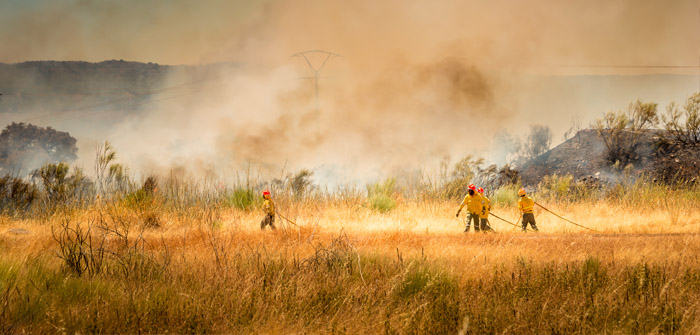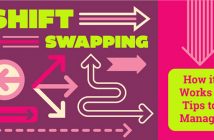(How do businesses plan around climate they can’t control? | Photo Courtesy of PayneWest Insurance)
With the recent earthquake in California and wildfire season already getting started to the north and to the south, we are reminded that the frequency of natural disasters is on an upward trend. In the past two years alone, these events cost the U.S. economy nearly $400 billion. How do businesses best plan for a natural disaster that might strike at a moment’s notice?
The answer is to look at probabilities of natural disaster and be as prepared as you can get.
How Natural Disasters Can Affect Your Business
“Natural disasters aren’t really all that random,” said Bruce Hollcroft, CSP, ARM, CHMM, senior risk control specialist, PayneWest Insurance. “The more often something like that happens, in fact, the more predictable they can be.”
“You certainly know when you’re in an earthquake-prone area, and the construction plan has to be more substantial than other areas,” Hollcroft said. “Even wildfires are fairly predictable in areas where there are frequent dry and windy and hot conditions. Or in the Midwest, where floods and tornadoes occur frequently — you might not get one every year, but chances are it will happen within three or five years.”
“From my perspective, when you identify potential hazards, you can take steps to assess the risk,” he said. “What would happen, how severe could it be, and how likely is it to happen? Then you prioritize the controls or protective measures based on that risk assessment.”
How to Plan for the “After” Time
It is important to have a disaster plan in place, especially if you live and work in an area that is prone to events that could happen suddenly: like wildfires, floods, hailstorms, blizzards or heavy snowstorms.
Step 1. Pull a team together internally.
This team can create multiple plans based on what potential disasters could affect the business. From long-term loss of power to storm damage to office buildings or warehouses and equipment, you’ll want to start to brainstorm anything and everything that could go wrong.
Step 2. Create a communication plan.
In the event of an emergency, have a clear way of communicating with employees, and in some cases, your local emergency personnel and the media. You’ll want anything from a phone tree, a buddy system or an automatic alert text or email plan in place so that one of a team of people can give guidance and advice to your employees. Note that basic emergency plans are often expected and required by state law or OSHA.
Step 3. Have a business continuity plan.
This might include how you get work done when there’s a loss of certain infrastructure, from long-term power loss to water contamination after a flood. Have offsite resources planned, even with an offsite command center. Note which vendors and customers will need to be notified if you’re doing business in a new location or with a limited staff.
If you could be faced with issues of decreased workforce or supplies, you can get some contracts in place with outside suppliers in the case of emergency. Think of it: everyone in your county just lost power due to a wildfire knocking down power lines for miles. The nearby emergency power generator company is going to be flooded with phone calls. If you have a standing order already in place, you won’t have to scramble to rent power. It will already be saved for you to use.
Step 4. Be clear and communicate well.
Large disasters might mean that you’ll need to keep staff and local authorities updated frequently. Know who your media spokesperson(s) will be in the event of disaster, and even talk about what those immediate messages might say. Communicate to stakeholders including board members about your status, and make sure to keep customers in the know so they don’t go guessing. And especially, be clear to employees about how your business is faring and how it might affect their work hours, paycheck and even long-term employment.
Some great resources online are from FEMA at Ready.gov/Business so you can get your business all set in case of a natural disaster.
You also should have a “disaster plan” discussion with your insurance broker. Your risk exposures and risk tolerance are unique to you and your insurance program should be tailored to meet your needs. What should be insured and what risk are you willing to take on yourself? What options are available in the market? Responses to these and other questions help your broker design the right insurance program for you.




